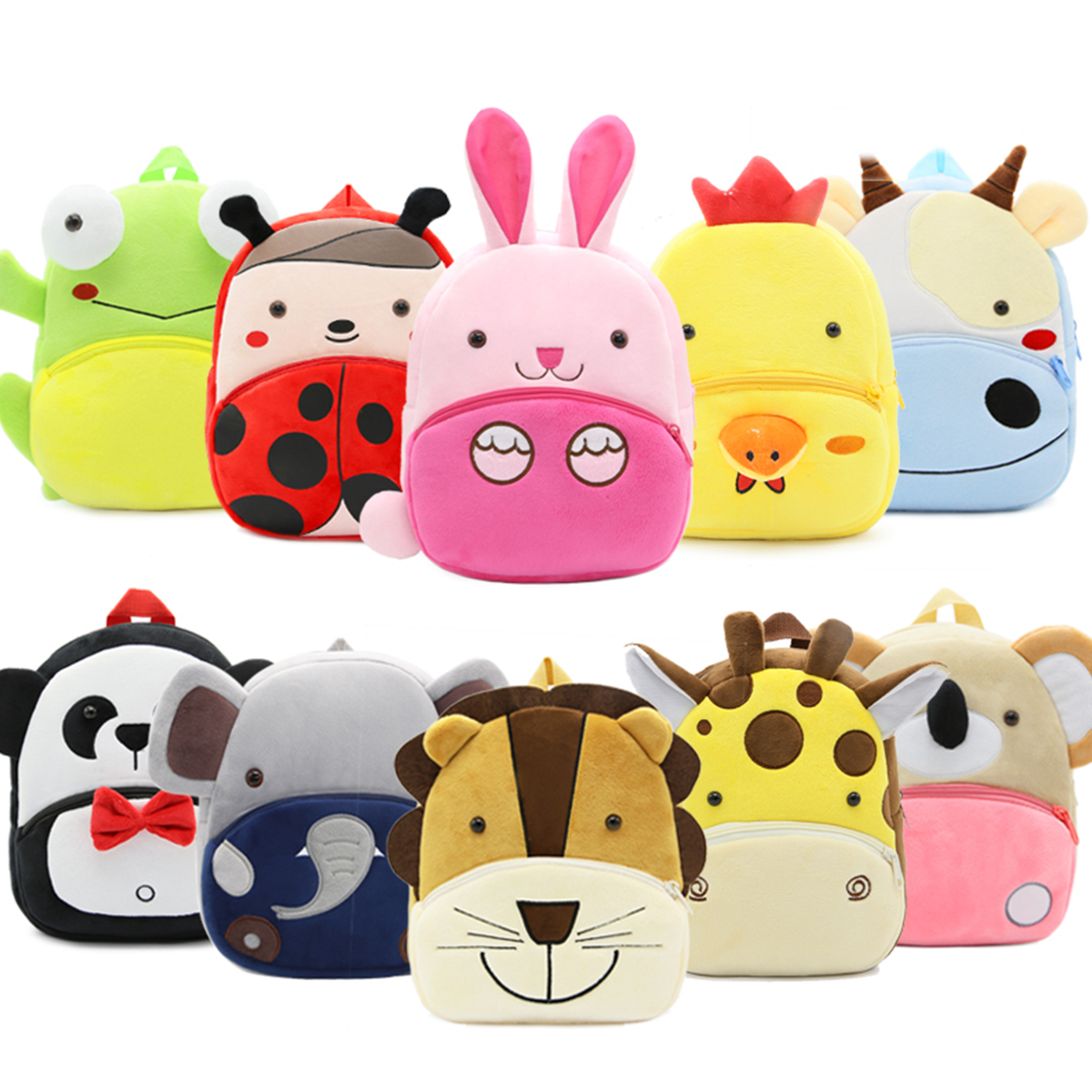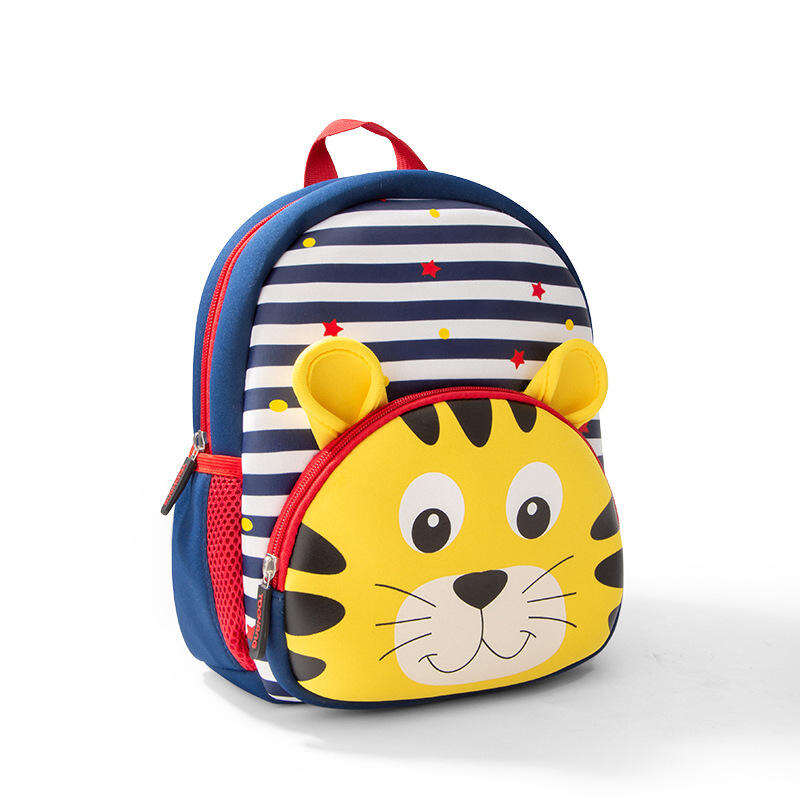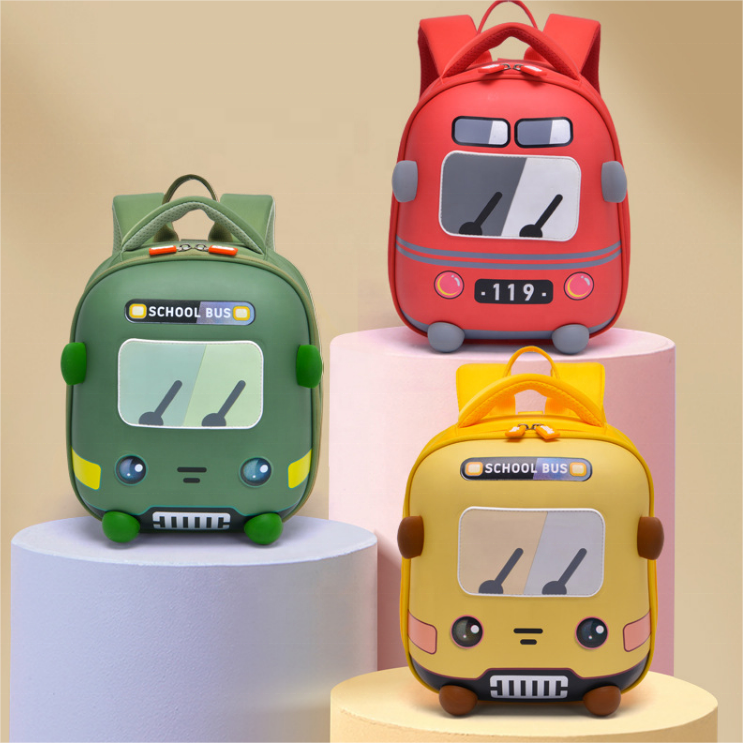Ergonomic Designs in Kids' Backpacks for Comfort and Posture Support
2025
Why Ergonomic Designs Matter for Kids' Backpacks
The Link Between Backpacks and Posture Development
Ergonomic designs are crucial for kids' backpacks as they significantly impact posture development during growth phases. Studies indicate that improper weight distribution from backpacks can lead to spinal alignment issues. For example, when a child carries a heavy load unevenly, it may cause hunching, leading to long-term postural problems. Pediatric experts recommend using backpacks that distribute weight evenly to prevent such issues. According to health organizations, around 55% of children who carry backpacks experience related discomfort, underscoring the importance of proper backpack design for kids.
Common Health Risks from Poorly Designed Backpacks
Poorly designed kids' backpacks can pose several health risks, including muscle strain, nerve compression, and back pain. School health surveys reveal that a high percentage of children report back pain from the misuse of backpacks. Expert opinions from chiropractors and pediatricians caution that carrying heavy and unbalanced loads can have long-term consequences, potentially leading to chronic pain and alignment issues in adulthood. These insights highlight the importance of selecting well-designed backpacks to mitigate these risks and promote healthier growth.
How Ergonomic Features Prevent Long-Term Damage
Ergonomic features in backpacks, like padded straps and structured frames, play a key role in preventing long-term damage to children’s backs and shoulders. For instance, padded straps distribute weight more evenly and reduce pressure on delicate shoulder areas. Studies demonstrate significant reductions in injury reports among children using ergonomic backpacks. Moreover, ongoing education for parents and children about proper backpack use is vital in ensuring lasting health benefits. By adopting these practices, kids can maintain proper spinal health and avoid potential issues in the future.
Essential Ergonomic Features for Posture Support
Padded Shoulder Straps and Weight Distribution
Padded shoulder straps are crucial in ergonomic backpack design, as they help alleviate pressure on a child's shoulders by promoting even weight distribution. By incorporating padded straps, backpacks can significantly reduce the strain that uneven loads place on the shoulder and neck muscles, potentially preventing discomfort and long-term musculoskeletal issues. According to research and product comparisons, backpacks with well-designed padded shoulder straps contribute to better weight distribution, which is essential for maintaining a child's posture and ensuring comfort during prolonged use. Ergonomic designs prioritize load balance, reducing the risks of slouching or developing poor posture habits.
Adjustable Sternum and Hip Belts
Adjustable sternum and hip belts are essential components that ensure a backpack fits properly, providing vital support for maintaining posture. These features allow for a personalized fit, accommodating different body types and sizes, which enhances comfort and reduces the risk of strain. Experts in pediatric health often advocate for the use of these adjustable belts, due to their role in distributing the backpack's weight more evenly across the torso and hips, rather than concentrating it solely on the shoulders. This not only supports a child's posture but also minimizes the chance of pressure points and associated discomfort.
Breathable Back Panels and Spinal Curvature Support
Breathable back panels are a key ergonomic feature that enhances comfort, especially in warm conditions, and contributes to overall well-being. These panels allow for airflow, reducing sweat and discomfort that can distract or unsettle children carrying backpacks for long periods. In addition to comfort, spinal curvature support is crucial as it helps prevent stress on a developing spine, promoting correct posture. Ergonomic research indicates that incorporating breathable materials and designed support structures in backpacks can greatly enhance posture by ensuring the spine maintains a neutral and aligned position.
Top Ergonomic Kids' Backpacks for Comfort & Safety
Kids Backpacks: Customizable Safety & High Capacity
Kids' backpacks designed with customizable safety features, such as reflective strips, not only ensure visibility in low light conditions but also add a personal touch for children to express their style. Many backpacks offer high capacity, making it much easier for children to manage their school supplies, including books, laptop, and other essentials. For example, the Kids Backpacks focus on functional designs that emphasize both safety and convenience.

Organizational features, such as multiple compartments, are crucial to ease of use and ensuring that each item has its place. This balance of high capacity and safety, paired with a stylish design, marks the top choice for parents and kids alike.
Waterproof Multifunctional School Bags for Teens
Teens often require backpacks that can withstand various activities, from school to sports. The use of waterproof materials in backpacks ensures the protection of contents against rain or accidental spillage, making these bags ideal for teens. The Custom Children Primary School Bags Teenagers Backpacks Multifunctional Factory Waterproof highlight these features by offering design versatility for different activities.

These backpacks often cater to teen preferences through trendy designs and practical functionalities, ensuring they appeal to a younger audience while maintaining durability and protection.
Cartoon Neoprene Backpacks: Lightweight & Durable
For younger children, cartoon-themed neoprene backpacks offer a delightful blend of fun and practicality. Neoprene is a material that provides lightweight yet robust solutions, ideal for active kids who might toss their bags around. For instance, the Custom Cartoon Cute Waterproof Neoprene School Bag Children Backpack showcase vibrant designs and reliable durability.

Many children express a preference for colorful and themed designs, as evidenced by various surveys, making these neoprene backpacks a popular choice for parents wanting both style and substance.
Car-Themed Waterproof Backpacks for Easy Organization
Car-themed backpacks offer both aesthetic appeal and organizational efficiency, often incorporating numerous compartments to keep items like snacks, school supplies, and personal effects neatly arranged. The Custom Cartoon Car Waterproof Backpack Children Cute School Bags emphasize these practical features, ensuring contents remain dry with their waterproof design.

By offering a charming and user-friendly experience, these backpacks receive high marks in consumer reviews and are recommended by experts for anyone seeking both organization and stylish flair in a school bag.
Choosing the Right Fit for Your Child
Matching Backpack Size to Body Proportions
Selecting the correct backpack size is crucial for your child’s comfort and spine health. A well-fitted backpack should align with the child’s body, proportional to their height and weight, ensuring even weight distribution and minimizing strain. Generally, a backpack should not be longer than the child's torso or wider than their body. Measure your child's torso length from the base of the neck to the top of the hip bones and use this to select an appropriate backpack size. Comfortable straps and a suitable back panel are also important. Studies have shown that children using backpacks tailored to their size experience fewer posture-related issues and increased daily comfort.
Weight Limits and Packing Strategies
To safeguard against health issues, it's important to adhere to recommended weight limits for backpacks, typically not exceeding 10-15% of the child’s body weight. Overloading a backpack can lead to poor posture and back pain. Effective packing strategies can help manage weight distribution: place heavier items at the back and center of the bag to stabilize the load, and utilize compartments to organize belongings efficiently. Experts also recommend using waist and chest straps for added support. By observing these strategies, parents can significantly minimize potential strain on their children’s developing bodies.
Maintenance Tips for Long-Term Durability
Maintaining backpacks is essential to ensure their longevity and continued safety. Regular cleaning and spot treatment can prevent material deterioration. Address common issues such as broken zippers and torn straps promptly, following manufacturers’ guidelines or consulting expert advice. It is also important to routinely check for wear and tear, reinforcing any weak areas before they worsen. By committing to regular maintenance, not only does the longevity of the backpack increase, but it also ensures sustained performance that supports your child’s needs.

 EN
EN
 AR
AR
 CS
CS
 DA
DA
 NL
NL
 FI
FI
 FR
FR
 DE
DE
 EL
EL
 IT
IT
 JA
JA
 KO
KO
 NO
NO
 PL
PL
 PT
PT
 RU
RU
 ES
ES
 SV
SV
 IW
IW
 UK
UK
 TR
TR
 AF
AF
 GA
GA
 IS
IS
 LA
LA

